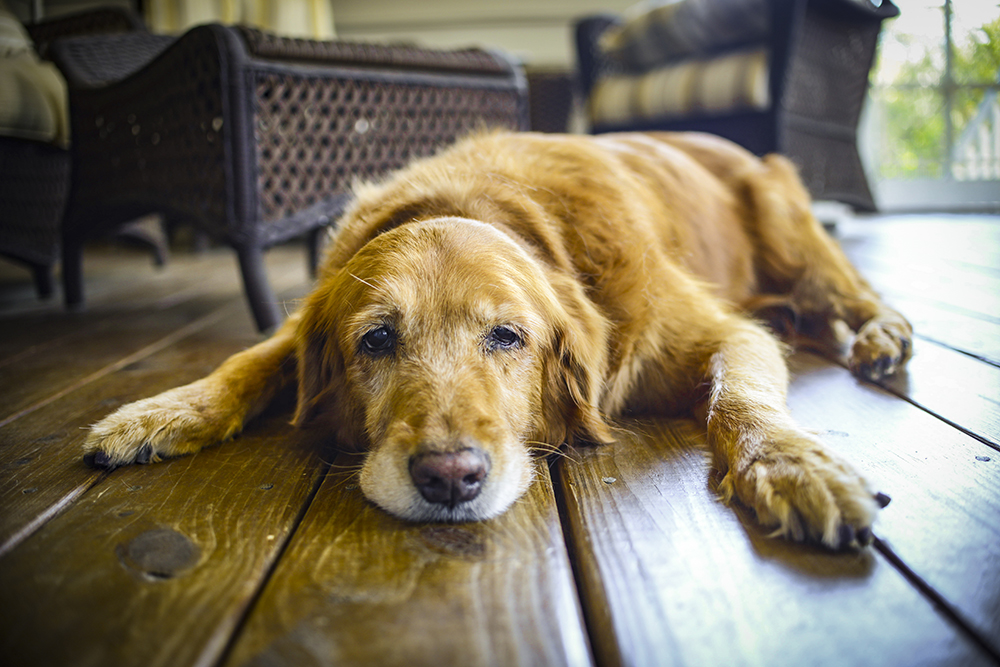Thunder and Anxiety in Dogs: How to Help Your Dog Cope
Among dogs, the fear of thunder is a widespread phobia. It is typically characterized by behaviours such as hiding, whining, barking, pawing, or even urine.
No one knows for certain what causes dogs to be scared of thunder. Some breeds appear to be more susceptible to the condition than others.
The treatment of thunder anxiety can be challenging, but it is necessary to try because the worry tends to get more pronounced as one grows older.
Thunderstorm anxiety in dogs can manifest itself in a variety of ways, including excessive panting and shaking.
A drop in air pressure, rain on the roof of the home, brilliant flashes of light, or merely the sight of rain on the roof of the house may be enough to cause anxiety. Dogs that are terrified of thunder are also prone to developing a fear of explosions.
Don’t scold or cuddle your dog
Neither punishing your dog for being anxious nor cuddling him excessively are recommended for coping with this fear, as both of these actions might aggravate the situation. As a result of punishing the dog, he will become even more fearful and nervous, because he will identify thunder not only with terror but also with punishment.
It is also not recommended to cuddle or soothe your dog excessively because this teaches your dog that his worried behaviour is acceptable and appealing to you.
2 Everything is in good hands.
Providing a safe spot for a dog who is terrified of thunder is one of the first things you should do for him when the storm comes.
Dog crates (which are commonly used for transporting dogs), under a bed, or under a chair are all frequent hiding places for dogs. Your dog likes these locations because they provide him with a sense of security and because the noise that frightens him is muffled in these settings.
If your dog hasn’t chosen a spot yet, you should provide one for them. In order to encourage him to go to the storm shelter, you may want to leave a couple of goodies in it while the storm is going on.
GIVING YOUR DOG A SAFE PLACE TO GO DURING A STORM WILL HELP ALLEVIATE SOME OF THE INDICATORS OF ANXIETY, BUT IT WILL NOT ADDRESS THE UNDERLYING SOURCE OF THE PROBLEM, WHICH IS FEAR.
This is a more challenging task, and you will most likely want the assistance of your veterinarian or a behaviour specialist to complete it successfully.
One of the most important steps is to gradually desensitize your dog to the sound of thunder and other stimuli connected with thunder.
THE SOONER YOU BEGIN TREATMENT, THE MORE QUICKLY YOU WILL EXPERIENCE BENEFICIAL OUTCOMES IN YOUR CONDITION.
1 Contentment is bred by familiarity.
The process of desensitization must be done gradually. Basically, you want your dog to become accustomed to the sound of thunder and accept it as a typical occurrence. This is typically accomplished by playing recorded thunder at a low volume and in brief bursts at regular intervals.
In order to replicate real thunder, the thunder sound should be irregularly delivered. You should keep an eye on your dog’s behaviour while doing this.
TRY TO DIVERT HIS ATTENTION AWAY FROM THE NOISE BY PLAYING FETCH WITH HIM OR INDULGING IN SOME OTHER FUN ACTIVITY WHILE IT IS PRESENT.
If your dog is too scared to engage, you will need to reduce the intensity of the thunder stimulation and try again another time.
This may be a time-consuming operation that requires a great deal of patience, but your dog will be considerably more comfortable during a storm as a result.
Fact-Finding:
Thanks for reading and have a great day! What are your opinions on this? Thunder and Anxiety in Dogs!
Please post your thoughts in the comments section if you have any. Please feel free to share!

